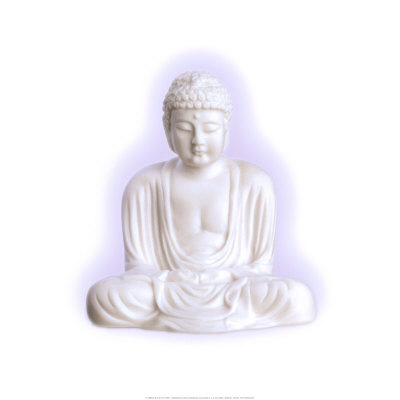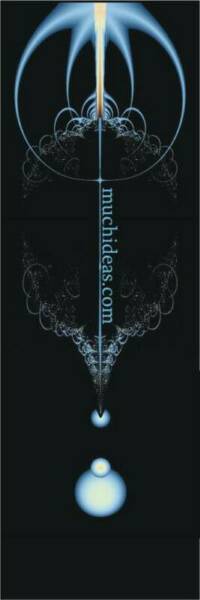

SOUL RESEARCH INSTITUTE
(866)-397-6939, 719-488-0548, 303-507-5169

SEARCH
Copyright 2008 SOUL Research Institute
C



Concentration is the second element of SOUL Meditation.



Concentration basically means focusing of consciousness and mind on a single object without scatter and distraction of any kind. Concentration is that mental phenomenon by which one-pointedness and unification of consciousness and mind occurs. Concentration is that element which brings about the perfection in the process of mental development. It is called concentration because it is one-pointedness of mind and because it unifies and fixes all mental elements on the object.
When elements of Thinking, Thoughtfulness, and Happiness/Rapture are present, concentration functions effectively to unify all mental phenomena. Specifically, for concentration to occur, the presence of rapture/happiness is necessary, because, the element of Rapture/happiness removes the physical and mental afflictions that act as hindrances to the arising of concentration.
Concentration leads to contemplation or meditation. Concentration is at the heart of any meditative activity. Even just as a trace, concentration is always present in all meditations. There are increasing ‘levels of concentration’ which result in higher and higher states of meditations or ‘mental absorptions.’ Ultimately, these mental absorptions lead to liberation from mental attachments.
Element of Concentration is not intrinsically wholesome. It becomes wholesome only when it arises out of the wholesome subject or only when it arises with wholesome elements of Non-greed, Non-hatred, Non-Delusion, etc. If a person is concentrating on shooting and killing his target, or, if a power-hungry religious leader is developing concentration for gaining upper hand over others, then, such concentration is unwholesome because it is rooted in greed, hatred and delusion. If, on the other hand, a saint or a monk is developing concentration for purifying the mind, it is wholesome.
Element of Concentration is different from the element of Mindfulness. Both elements are present in all effective and wholesome meditative activities and both perform distinct functions. For example, concentration primarily leads to focus, mental absorption and calm while mindfulness primarily results in present-moment awareness and understanding. It is important thing to understand is that, when mindfulness is present, then only concentration becomes wholesome. This will become clear as we continue our discussion.
The element of Concentration along with wholesome elements decisively ‘awakens’ the mind to its own ultimate potential. When its wholesome nature is established through ardent and diligent practice, it makes the mind worthy of and ready for perfection. Therefore, I like to consider Concentration as a very important ‘mental-power-factor.’
No amount of discussion or intellectual knowledge will unravel the power, the beauty, the depth and the subtlety of concentration. One has to really meditate diligently to witness its wonders. Nevertheless, as much as possible, let us try to first intellectually understand how to develop concentration.
Prerequisits for the Practice of Concentration
The first step is to become "Skillful in your Pursuit." This is a prerequisit for the practice of concentration.
Practicing concentration is not a difficult task, but a skillful one. It does not require goal-setting, hard work, power, or passion. It requires pure skill. It requires skill in the way of living, skill in sociability, skill in effort, skill in volition, skill in recollection, and skill in equanimity. In order to develop some of these skills, we recommend doing the following:
1. Choose a living place which is free of dust, heat, smell, mosquitoes, insects, strong winds, noise, and nuisances of daily living.
2. Choose healthy foods that are suitable for the given climate and eat moderately.
3. Maintain silence most of the time and speak only in moderation and only if necessary.
4. Live in the company of virtuous and noble people and avoid the company of worldly-minded people.
5. Practice regularly without fail. During prolonged meditations, use comfortable posture so you can sit firm and erect for long periods of time without pain. The posture should neither generate idleness nor agitation.
6. Practice concentration only when it is appropriate to practice. Do not force yourself to meditate. Exert the mind only to such an extent that it is not forced. If you feel agitated, then you are forcing the mind. When the mind is not at all willing to meditate, become aware of the fact that you are not able to meditate and simply let go for a while. Before trying again, read inspirational books, listen to spiritual discourses, do physical and breathing exercises, or simply take a walk in the woods.
7. Encourage yourself by reviewing the qualities of enlightened persons who are always happy and blissful. Stimulate the mind by recollecting the benefits of peace of mind and serenity which results from the blissful state of mind.
8. Give importance to developing concentration. Develop inclination for it. Become firm and unwavering in your practice. Develop a sense of urgency for attaining it; however, do not crave it. Do not try to achieve it. Just meditate and follow the pursuit and let go of any desire for it and let it happen.
How Concentration Makes the Mind Happy and Blissful
Let us first try to understand what Happiness and Bliss is.
Happiness is a wholesome mental reaction, a mental formation, a thought. It is wholesome because it refreshes, energizes, invigorates, and cools down the mind. It results in the feeling of joy, elation, and gladness. It is experienced as that. It is manifested as that. Bliss, on the other hand, is not a mental reaction or a thought. It is rather an actual feeling, a pleasant feeling, a physical and mental experience.
An infant is generally referred to as “blissful.” The experiential state of an infant is blissful because the infant is devoid of thought. “An infant is blissful” is a more appropriate statement than “An infant is happy.”
Let us say, on one hot summer day, you become extremely thirsty and then you see a glass of cool water. What will be your immediate reaction? It will be obviously of happiness. You will be happy to see water. You will feel happy in mind. But when you will actually drink that glass of water, what you will feel is the bliss. This feeling of bliss will be different from the feeling of happiness because bliss is a pure feeling in the embodiment that is devoid of thought. The feeling of bliss is more profound than happiness because it pervades the entire being by flooding it. That is why bliss is more gratifying than happiness; however, it cannot occur without the happiness and without the practice of concentration.
Let us now briefly discuss various steps of concentration practice that lead to the experience of happiness and bliss.
Steps 1 through Step 12: Establish yourself in breath-awareness (see SOUL Meditation No. M16). During this practice, observe all the thinking that goes on in the background. Become familiar with the phenomena of discursive thinking, association of thoughts, initial application of thought, repetition of thought, etc.
Step 13: Continue the practice ardently and consistently for increasing periods of time without reacting to thoughts. Breath will soon become softer and subtler with increased concentration. Thinking will now reduce and thoughtfulness will arise. The breath will eventually become soft and subtle to such an extent that there will be a feeling of silky touch, a feeling of a subtle vibration in the confined area of focus. When this happens, there is momentary experience of happiness and bliss.
Step 14: Subtle breath is now replaced by a subtle vibration, a subtle silky touch, a touch of the warmth of life. Observe this feeling ardently and consistently without reacting to any thoughts that may arise.
Step 15: Now, move your attention to the area other than the small area below the nose tip. Experience the subtle vibration there. Then move your attention to other parts of the body by moving the awareness gently from part to part. Cover the entire body from top of head to the tip of toes. Repeat this process by going back and forth from top to bottom of the body. Do not stop at any one place for a long time. Neither move your awareness in a continuous manner. Just stay at one confined area of focus for five seconds and move on. The subtle vibrations will arise and pass away on their own accord.
Do not strive to feel the vibrations or the subtle touch. Do not develop craving for them. Your task is not to strive for any feeling of subtle vibrations. The main task is to develop awareness and concentration. This is an important warning because, if you are not aware of it, your concentration practice may become a means for the enjoyment of happiness and bliss that arise out of the feeling of subtle vibrations. Develop equanimity towards the pleasant subtle vibrations by simply observing them as they come and go. This is the first big challenge the meditator should confront successfully.
Step 16: While moving the attention over the body, you may pass through soft areas of subtle vibrations and hard areas of pain and stiffness. Do not develop liking for soft areas and aversion for hard areas. Do not classify then as pain or pleasure. Simply observe them as they are without stopping for longer time in soft areas and without avoiding hard areas. With intentional equanimity, continue to move the attention throughout the body.
Step 17: A stage will come when you will feel subtle vibrations throughout the body as you move your awareness from part to part. At this stage, take a long in-breath and out-breath with an intention of feeling the subtle vibrations in the entire body in one in-breath or one out-breath. Continue the practice until you can experience the whole body by feeling the subtle vibrations throughout the body in one ‘long’ breath.
Step 18: Then, practice until you can experience the whole body by feeling subtle vibrations throughout the body in one ‘short’ in-breath and out-breath. Alternate the short and long breath and feel the entire body as a bundle of subtle vibrations in one breath without developing any craving. Soon, you will begin to experience lightness in the body.
Step 19: Now, breathe normally. No intentional long or short breaths. Experience the whole body by feeling subtle vibrations throughout the body in ‘normal’ in-breath and out-breath. You will now begin to feel uplifting happiness and bliss as you breathe normally experiencing the whole body as a bundle of subtle vibrations.
Step 20: The experience of subtle vibrations or uplifting happiness and bliss will not last for more than a few moments. Observe and understand this momentary nature of the experience. Through wise attention, understand the phenomenon of impermanence in your experience. Do not crave the experience of subtle vibrations or the experience of uplifting happiness and bliss. Let it come and go. Based on the understanding of impermanence, simply observe the arising and passing away of all experiences with equanimity.
Step 21: Now, suspend the breath after exhalation and move your awareness from top to bottom of the body in a sweeping manner experiencing the whole body as a flow of awareness. Then move you awareness from bottom to the top in a sweeping manner experiencing the whole body as a flow of awareness. Do this only when the breath is in suspension. Do not hold the breath. Simply suspend the breath after the exhalation.
In this way, access the realm of happiness and bliss in steps through increasing levels of concentration. At the end of meditation, review these steps as four stages of concentration development to reflect upon your actual meditative experience of happiness and bliss
(See SLIDE).
Using this Soul Meditation, experientially understand how happiness and bliss arises out of the development of concentration and how concentration deepens with the expansion (from momentary to showering to uplifting) of happiness and bliss. Establish yourself in the understanding: “How significant happiness and bliss is when it comes to deepening concentration! How significant concentration is when it comes to making the mind happy and blissful!”
How Concentration Leads to Transcendence
Transcendence generally means, “Experiencing the fading away of a phenomenon.” So, transcending thoughts would mean going beyond the experience of thinking and thoughtfulness by realizing their gross nature as their experience fades away.
Transcending is like graduating, going beyond, letting-go, neutralizing, non-differentiating, becoming uninterested, becoming desireless, non-reacting, etc. Transcendence is that phenomenon which is responsible for the occurrence of extraordinary (or empowered) states of mind such as contentment, renunciation, equanimity, non-attachment, blissfulness, and peacefulness.
Transcending has the effect of surmounting, overcoming, and effectively stilling the consciousness. Transcendence thus facilitates penetration of subtler and subtler realities: from thoughts to happiness to blissfulness to peacefulness. See slide for examples of actions that lead to transcendence.
(See SLIDE)
Now let us discuss steps that lead to the experience of transcendence through the practice of concentration.
Step 1 through Step 21: Same as discussed above under the section "How Concentration Makes the Mind Happy and Blissful." Follow these steps continuously and skillfully practicing concentration for an extended period of time to attain "mental absorption" in breath. Such mental absorption is absolutely essential for removing subtle mental attachments which ultimately leads to the experience of transcendence.
Step 22: Use the gap generated by the suspension of breath for stilling the bodily formations. While the breath is suspended, move your awareness from top to bottom and from bottom to the top of body in a sweeping manner with an intention of stilling the bodily formations and transcending the body. As the gap or the duration of suspension increases and your awareness flows effortlessly throughout the body, you feel as if the body is weightless, hollow, and empty. You feel as if there is only the flow of awareness. The body is now simply experienced as a flow of awareness. At this state, there is no thinking except a sustained thought or understanding that there is an experience of body as a flow of awareness and nothing else. When this awareness and understanding is established beyond doubt, there is pervading happiness and bliss born of transcendence. In these moments of transcendence, there is a feeling of desirelessness, renunciation, contentment, and satisfaction. There is neither craving nor aversion resulting in a feeling of equanimity. In such moments of experience, you enter the realm of absorption in body.
Step 23: The experience of “flow of awareness” throughout the body and the “pervading happiness and bliss” will not last for more than a few moments. Observe and understand this momentary nature of experience. The flow of awareness will be interrupted by thoughts or the arising of painful bodily sensations. Observe the thoughts or the arising of painful bodily sensations until they pass away. No thought or a bodily sensation will last forever. Through wise attention, understand this phenomenon of impermanence in your experience at the level of the body. Do not crave the experience of the flow or the experience of pervading happiness and bliss. Nor develop aversion to painful bodily sensations. Simply let them come and go by staying firm in equanimity. Based on the experiential understanding of impermanence, simply observe with equanimity the arising and passing away of all experiences.
Step 24: With practice, the periodic and sporadic moments of mental absorption will increase to such an extent that it will be sustained for a few continuous moments. These continuous moments will then increase to become short periods of absorption.
Step 25: During these periods of absorption, contemplate on the nature of the body. Based on the experience you had, realize the vibrational and dynamic nature of the body structure. Try to change these subtle vibrational sensations in the body by autosuggestion. Try to intentionally stop them, or, try to increase their intensity. Realize how you cannot change any of their characteristics. Similarly, try to stop the painful bodily sensations by autosuggestion and realize how utterly impossible it is. Realize how the bodily sensations cannot be controlled by you. Realize how they simply arise and pass away (based on conditions) without you having any control over them. In this way, understand “body as body” and not as your body because you have no control over it. Understand that the body exists; however, it is not your body. Understand that there is no owning of the body. Understand the complete absence of “I” in the body.
Then, contemplate this way: There is no “I” in the body, then who is the one who is realizing all this; where is the “I” who understands all this?
Contemplate to realize where is the “I” who is aware of it all. Contemplate with wise attention. With practice, there will be realization that such an “I” simply does not exist. What really exists is the “body as body” and just the “awareness and understanding” that it is body. Understand that the “awareness and understanding” was mistakenly taken as the “I.” Then, simply abide in the absorption of such “awareness and understanding” without clinging to the body or anything in the world.
Step 26: After the experience of several periods of such mental absorption, take time to review the entire process of concentration from beginning to end and from end to beginning, (Step 13 through Step 25, and then Step 25 backwards to Step 13). Once the entire process is thoroughly contemplated and understood, renew the practice so you can enter, advert, attain, maintain, and exit mental absorption at will and without any difficulty. In this way, perfect the process of mental absorption.
Step 27: While abiding in mental absorption and experiencing lightness, hollowness, and emptiness of body, feel the pervading happiness and bliss born out of transcendence of the body. Now, move your awareness from the feeling of lightness, hollowness, and emptiness in the body to the feeling of happiness and bliss itself. Feel happiness and bliss as a mere feeling, as a feeling-phenomenon and not as something that is in the body. With practice, a stage will come when the mere feeling is experienced and not labeled as happiness and bliss. Feeling will be experienced as “feeling” and not as a feeling of happiness or bliss, neither as a bodily feeling. Now, the feeling is not thought about and labeled but simply experienced and understood as just a feeling to such as extent that there remains only “awareness and understanding” of it. There is no thought, no labels for that experience. When this “awareness and understanding” is established, there is pervading happiness and bliss born of transcendence of body and thought. In these moments of transcendence, there is thoughtlessness because of unification of consciousness and mind. This unification results in the experience of poise, steadiness, coolness, and oneness. There is neither craving nor aversion, which results in a feeling of equanimity. However, this feeling of equanimity is a pure feeling without the thought of equanimity. Thus, it is not only purified of body but also of thought. In such moments of experience, you enter the realm of absorption in mind.
Step 28: During the practice of absorption, pleasant or unpleasant feelings may arise. Joy or sorrow may arise. Notice how these feelings arise, last for some time, and eventually pass away. Notice how the experience of transcendence also does not last for more than a few moments. Observe and understand this momentary nature of experience. Through wise attention, understand this phenomenon of impermanence in your experience at the level of the “mind.” Do not crave the experience of pleasant feelings, joy, or transcendence. Nor develop aversion to sorrow or any other unpleasant feelings. Simply let them come and go. Based on the experiential understanding of impermanence, simply observe with equanimity the arising and passing away of all experiences.
Step 29: During the periods of absorption, contemplate on the nature of “feelings.” Based on the experience you had, realize the transitory and dynamic nature of the feelings. Try to change them by autosuggestion. Try to intentionally stop the feelings of sorrow if they arise, or, try to increase the intensity of joy or bliss. Realize how you cannot change any of their characteristics. Realize how utterly impossible it is. Realize how the feelings cannot be controlled by you. Realize how they simply arise and pass away (based on conditions) without you having any direct control over them. In this way, understand “feeling as feeling” and not as your feeling because you have no control over it. Understand that the feeling exist; however, it is not your feeling. Understand there is no owning of the feeling. Understand the complete absence of “I” in the feeling.
Then, contemplate this way: There is no “I” in the feeling, then who is the one who is realizing all this; where is the “I” who understands all this? Contemplate to realize where is the “I” who is aware of it all. Contemplate with wise attention. With practice, there will be realization that the “I” simply does not exist. What really exists is just “feeling as feeling.” Realize that Feeling feels and there is “awareness and understanding” that it is a Feeling. That’s all. Understand that the “awareness and understanding” was mistakenly taken as the “I.” Then, simply abide in the absorption of such “awareness and understanding” without clinging to feelings or anything in the world.
Step 30: While abiding in the deeper realm of absorption and experiencing steadiness, coolness, and oneness of body and mind, move your awareness from the feeling of steadiness, coolness, and oneness to the feeling of happiness and bliss itself. Feel happiness and bliss as a mood, as a state of consciousness, as a phenomenon of consciousness, and not as something that is in the body and mind. With practice, a stage will come when feeling becomes a mere “experience” and not labeled even as a feeling. Feeling is experienced as a “state of consciousness” and not as a feeling of body or mind. The state of consciousness is not thought about and labeled but simply experienced and understood as just a phenomenon of experience to such as extent that there remains only that “awareness and understanding.” There is no bodily feeling, no thought, no labels for the experience, but just the state of consciousness. When this “awareness and understanding” is established, there is bliss born of simply the state of consciousness. There is neither craving nor aversion, which results in equanimity. However, this equanimity is pure bliss and pure awareness- a state of consciousness. It is purified of body, thought, and feeling. In such moments of experience, you enter the realm of absorption in consciousness.
Step 31: During the practice of absorption, various states of consciousness (moods) may be experienced. A state of contraction due to anger or lust, a state of expansiveness due to non-anger, a state of greatness due to non-lust, a state of distraction, a state of concentration, a state of pervading vastness, a state of delusion, a state nearing unsurpassability or perfection, etc. Notice how these states of consciousness arise, last for some time, and eventually pass away. Observe and understand this momentary nature of experience. Through wise attention, experientially understand this phenomenon of impermanence at the level of consciousness. Do not crave the wholesome states of consciousness; nor develop aversion to unwholesome states. Simply let them come and go. Based on the experiential understanding of impermanence, simply observe with equanimity, the arising and passing away of all experiences.
Step 32: During these periods of absorption, contemplate on the nature of “states of consciousness.” Based on the experience you had, realize their transitory and dynamic nature. Try to change the state of consciousness by autosuggestion. Try to intentionally stop the angry mood if it arises or try to increase the intensity of expansiveness. Realize how you cannot change any of their characteristics. Realize how utterly impossible it is. Realize how the state of consciousness cannot be controlled by you. Realize how they simply arise and pass away (based on conditions) without you having any control over them. In this way, understand “consciousness as consciousness” and not as your consciousness because you have no control over it. Understand that the consciousness exists; however, it is not your consciousness. Understand there is no owning of the consciousness. Understand the complete absence of “I” in the consciousness.
Then, contemplate this way: There is no “I” in the consciousness, then who is the one who is realizing all this; where is the “I” who understands all this? Contemplate to realize where is the “I” who is aware of it all. Contemplate with wise attention. With practice, there will be realization that such an “I” simply does not exist. What really exists is the “consciousness as consciousness” and the “awareness and understanding” that it is consciousness. That’s all. Understand that the “awareness and understanding” was mistakenly taken as the “I.” Then, simply abide in the absorption of such “awareness and understanding” without clinging to consciousness or anything in the world.
Step 33: While abiding in such absorption and experiencing pure bliss and pure awareness, move your awareness to the awareness of bliss itself. Experience the bliss as merely awareness and nothing else. With practice a stage will come when experience becomes “a state of awareness.” Experience is understood as a “state of awareness” and not as a feeling of body nor mind nor as the state of consciousness. This understanding reaches to such an extent that there remains only “awareness and understanding.” There remains no bodily feeling, no thought, no labels for the experience, no states of consciousness, but just pure awareness. When this “awareness and understanding” is established, all feelings, thoughts, and states of consciousness (such as bliss) are transcended. There is just pure equanimity with pure awareness. In such moments, you enter the realm of absorption in awareness and understanding. This is the realm of the SOUL which is beyond Body, Mind, and Consciousness and yet not separate from it.
Step 34: After the experience of several such periods of absorption, take time to review the entire process of concentration from beginning to end and from end to beginning for each stage of mental absorption. Once the entire process is thoroughly contemplated and understood, renew the practice so you can enter, advert, attain, maintain, and exit all stages of absorption at will and without any difficulty. In this way, perfect your absorption.
At the end of meditation, review these steps as four stages of mental absorption as shown in the slide to reflect upon your actual meditative experience.
(See SLIDE)
How Concentration Leads to Enlightenment
Diligently study and practice Step 1 through Step 34 discussed above.
Now, follow-up Step 34 above by perfecting the concentration by eradicating all remaining traces of ego (“I-ness”) including its seed form and then abiding in that absorption. Such mental absorption is unconditional; beyond experience; beyond words.
After perfecting all the stages of mental absorptions, a stage will come when the faculties of awareness, non-reaction, wise attention, and concentration will be perfected. At this stage, there is oneness of body, mind, and consciousness born out of transcendence. There is oneness born out of pure awareness and understanding. What then remains is just this “pure awareness and understanding.” While abiding in this “pure awareness and understanding,” contemplate the fading away of awareness itself. Contemplate the cessation of awareness itself. Contemplate the relinquishment of awareness itself. With such contemplation in deep concentration, a moment will come when the subtle “I-ness” or ego which is bound up with the awareness itself will be relinquished. This moment of relinquishment is the moment of transcending the SOUL- the moment of enlightenment which is beyond experience.
(See SLIDE)
Beyond Enlightenment
See SOUL Meditations M30 to M34 for transcending even the Enlightenment! and experiencing Nirvana. For a summary of stages, see the slide:
(See SLIDE)






C O N C E N T R A T I O N


